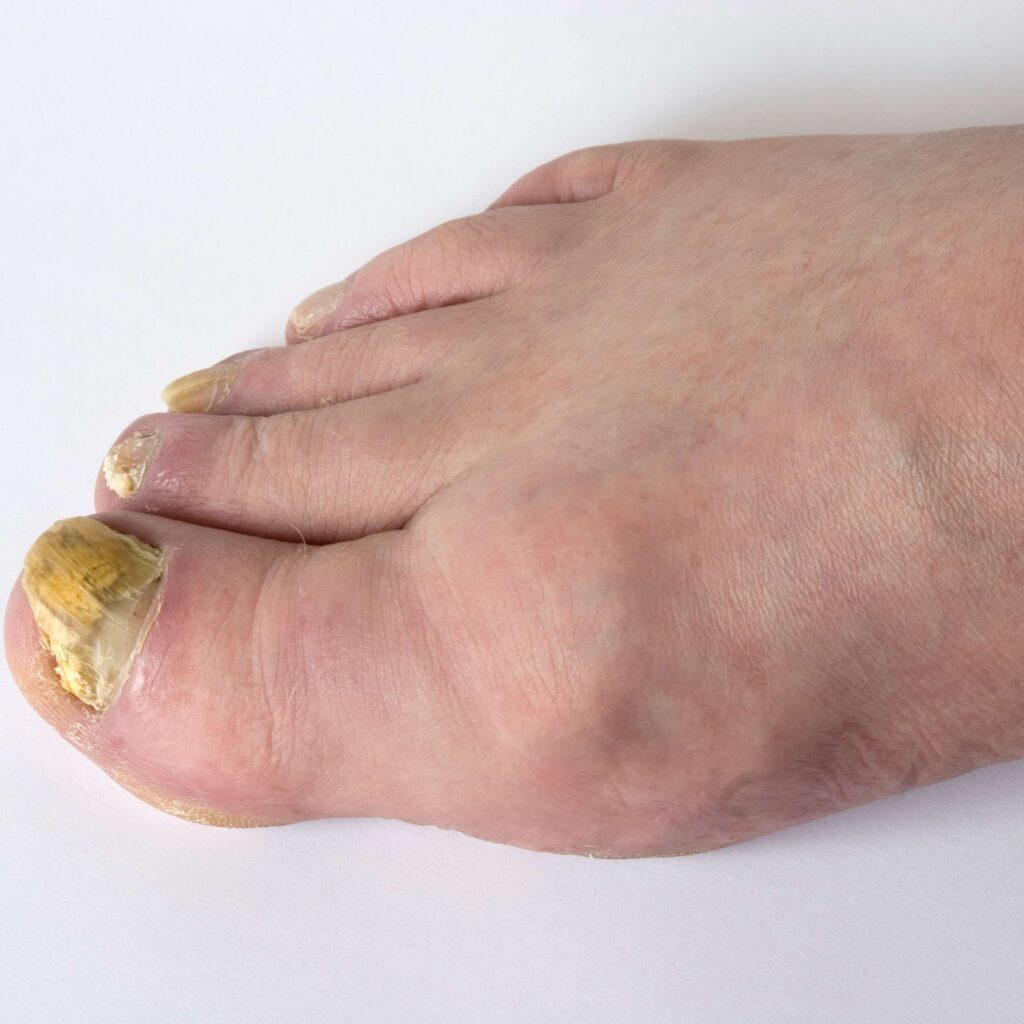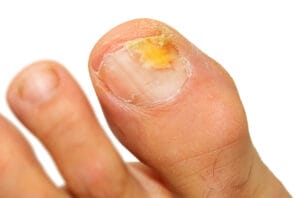
How to treat fungal nails
How to treat and get rid of fungal nails
If we had £1 for every time we get asked how to get rid of fungal toenails, well, we’d probably be retired and basking in the sunshine somewhere!
Fungal toenails are something that many people suffer with, and one of the most common conditions we see in clinic.
How to treat fungal nails
Before you start any treatment for fungal nails, it is important to make sure your nails are actually infected with a fungus, and that any thickness or discolouration to the nails isn’t being caused by something else. There are other conditions, such as eczema, psoriasis, nail bed damage and bruising that can mimic a fungal infection.
Different types of fungal infection will cause differing symptoms. For example, yeast-based infections may cause superficial white plaques to form on the nail. Other types of dermatophyte fungus can cause brown/green discolouration to the nail.
At Round House Podiatry, we can test a sample of a nail for the presence of a fungal infection, in clinic, which will give us a result in 5 minutes. Once we have established the cause of any nail issues and have a positive diagnosis, then we can formulate a treatment plan.

What can you do to treat fungal nails?
There are varying types of treatment available for fungal nail infections. Which treatment is appropriate will depend on the type and severity of infection.
If the infection is superficial, in other words the nail is a normal thickness, and the infection is within the upper layers of the nail, or limited sections at the sides of the nail, then a topical antifungal lacquer can work quite well.
If the nail is very thick, or if the majority of the nail is infected, then it may be better to start treatment with an oral antifungal medication, which will allow the medication to access the nail bed and nail matrix as the nail grows, eradicating the infection. This can work well alongside a topical treatment, with regular reduction of the nail thickness to allow any active ingredients to penetrate the nail plate better. Oral medications are available on prescription through your GP.
What can I do at home?
If you decide to treat a fungal infection at home without an appointment with a Podiatrist, or after you have been given treatment advice by an HCPC registered Podiatrist, then we have a few tips for you.
There are a lot of treatments available out there for fungal nails, some work better than others.
Our top tips would be –
- Make sure that any treatment you use contains an actual fungicidal ingredient. Many products that are out there on the market do not contain a fungicidal element. Many are weak forms of acid, which change the environment and the PH of the nail to make it inhospitable for fungus, but don’t actually kill the fungus itself. Others will effectively bleach the nail, improving the appearance but not eradicating the fungus. One of the main fungicidal ingredients in nail lacquers is Amorolfine, so ask your pharmacist what ingredients are in any lacquer you may choose to use. One good point to note is - Amorolfine is a prescription only medicine, so you cannot buy it over the counter. For the medicated lacquers, you would need to speak to a pharmacist. If you can buy a fungal nail treatment over the counter, it probably won’t have a fungicidal ingredient.
- Make sure that the nails you are treating are filed down well. If your nails are very thick, loose or crumbly, then anything you put onto them will not be as effective. Treatment needs to penetrate into the nail and the nail bed beneath to be effective. A Podiatrist can help with nail reduction if needed.
- Don’t forget the rest of your feet! If you have a fungal nail infection, chances are you will have some level of Athlete’s foot at the same time. The dermatophyte fungi which cause nail infections feed on keratin that your nails and skin are made of. They can infect both nails and skin, so make sure you are treating your skin with a suitable topical antifungal too.
- Don’t forget what else comes in contact with your feet. Spores from fungal infections can hang around in socks, shoes, clothes, towels etc. It is important to treat these too, so you don’t end up reinfecting the skin and nails after treatment. Using a laundry disinfectant additive to your clothes wash will help to keep fungal spores to a minimum. As will spraying shoes with an antifungal spray or powder on a regular basis.
Myth busting
There are so many myths out there about treating fungal nails! Here are a couple of the treatments that are myth and not recognised ways to treat fungal nails.
Vicks VapoRub. This does NOT work! The ingredients in Vicks are not fungicidal, and this ointment was never designed for fungal nails!
Apple Cider Vinegar (or any vinegar for that matter!) All this will do is change the PH of the nail slightly. It won’t kill the fungus.
If you’re in any doubt about treating fungal nails, or need some help with your management of them, then seeing a local HCPC registered Podiatrist is your best bet.
If you are local to Huddersfield, then you can book in to see us here.
A really great blog on fungal infections can be found here if you’d like to do some more reading!
Anna Conway
BSc (Hons), MCPod, SRCh, PGcert Podiatry
Owner, Lead Podiatrist

